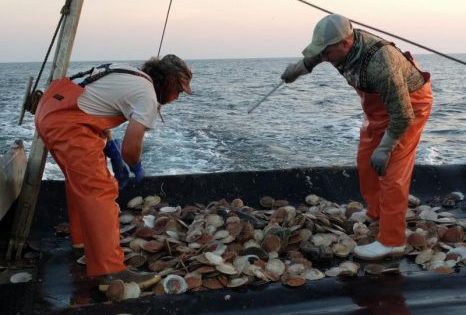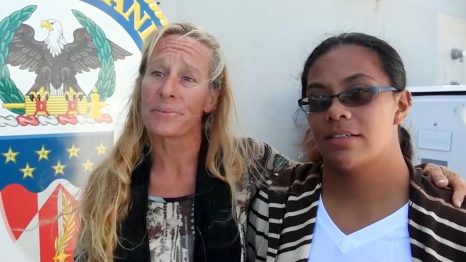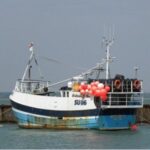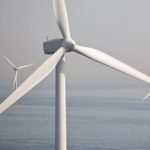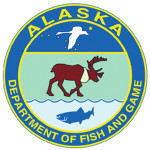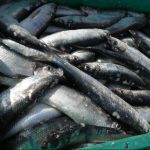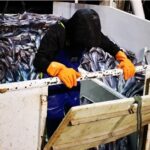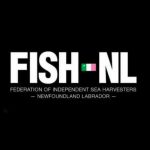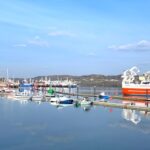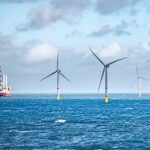Monthly Archives: November 2017
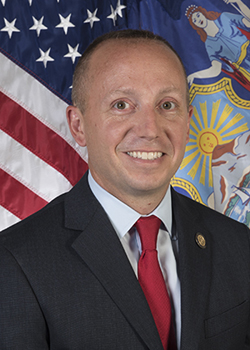
DEC Commissioner Basil Seggos says NY commercial fishermen ‘getting a raw deal’
New York commercial fishermen are “getting a raw deal” in federal fisheries quotas, and the state will follow through on a lawsuit early next year if meetings in December don’t fix the problem, the state’s top fisheries official said last week. At a meeting at the East Hampton Public Library on Thursday, Basil Seggos, commissioner of the state Department of Environmental Conservation, listened to two full hours of complaints about state and federal regulations and management of fisheries, including restrictive quotas, inaccurate fish-population data, difficulty in getting and transferring permits, and “Gestapo”-like tactics of federal observers on local fishing vessels. click here to read the story 10:10

Dungeness crab season under way on the North Coast
The commercial crabbing season will start on time off the Sonoma Coast this fall for the first time in three years, putting fresh Dungeness crab in local markets by week’s end and restoring long-held autumn and holiday traditions. Commercial crabbers around Bodega Harbor hustled Monday to load boats with gear and bait and leave port in time to start soaking crab pots off the coast by early Tuesday morning. Their clocks were set for 6:01 a.m., the first moment by law at which they are permitted to put gear in the water. They can start pulling full pots and landing crab at 12:01 a.m. Wednesday, the official start of the season. click here to read the story 09:04
Rhode Island Commercial Summer Flounder Fishery Closure
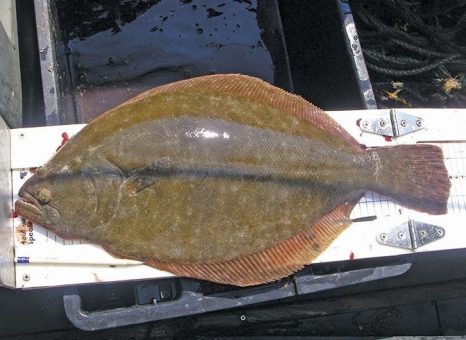 Effective 0001 hours November 14, 2017, fishing vessels issued a Federal moratorium permit for the summer flounder fishery may no longer land summer flounder in Rhode Island for the remainder of the 2017 calendar year. The 2017 commercial summer flounder quota allocated to Rhode Island has been harvested. This closure is concurrent with the State of Rhode Island’s closure of its commercial summer flounder fishery to state permitted vessels and dealers. click here to read the notice 08:42
Effective 0001 hours November 14, 2017, fishing vessels issued a Federal moratorium permit for the summer flounder fishery may no longer land summer flounder in Rhode Island for the remainder of the 2017 calendar year. The 2017 commercial summer flounder quota allocated to Rhode Island has been harvested. This closure is concurrent with the State of Rhode Island’s closure of its commercial summer flounder fishery to state permitted vessels and dealers. click here to read the notice 08:42

Premiering Saturday – ‘Dead in the Water’ showing in Rockport to benefit Fisherman’s Fund
When he embarked on his documentary “Dead in the Water” in 2013 as a cinematic army of one, David Wittkower operated with the sense that he was capturing, if not the final act, then certainly the denouement of the Gloucester fishing crisis. He had, on visits to his native Rockport from his home in Los Angeles, seen the atrophying of the once-proud commercial fishing fleet and decided it was a Gloucester story worth telling. Little did the veteran filmmaker know of the national and global nature of what he was witnessing along the waterfront of America’s oldest commercial fishing seaport. click here to read the story Watch the trailer click here 08:06
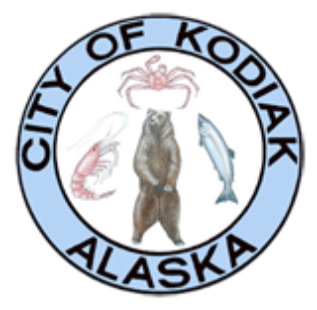
Kodiak fishermen may soon be able to sell fish from their boats
“I’m glad that we’re doing this. It will give the smaller fisherman a chance to make a little more coinage. It makes us feel more like a fishing town where you can go down to the fisherman’s boat and buy his catch.” Last year, the council was presented with a petition with 67 signatures asking for this change to the city’s code. Currently, in Kodiak, a person isn’t allowed to go to a fishing boat to buy fish or any other kind of fresh seafood. “I think this is the type of example we’ve talked about in terms of economic development and ways that a municipality can help facilitate business, growth and development.” click here to read the story 21:31
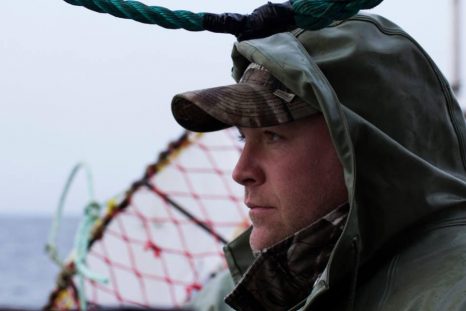
Fishing remains one of the most dangerous jobs in Canada. We talked to captains about their most hazardous experiences.
In 2017, fishing remains one of most—if not the most—dangerous jobs in Canada.,,, Storms, equipment failures, and even stingrays are among the many hazards fishermen face. Then there’s the everyday work, including setting longlines with hundreds of sharp hooks, hauling heavy lobster traps, and gutting swordfish, sharks, and tuna.,,, Regardless of what pulls a fisherman to sea, hazards are always lurking, so we talked to three East Coast captains about their most harrowing experiences at sea. click here to read the story 18:31
‘Stop this right now’: Cape Breton fisherman worried about seismic testing
 Fishermen in Cape Breton are worried about the impact planned seismic testing at the Donkin mine will have on their lobster grounds and livelihoods. Kameron Coal has been given the green light to blast sound waves out of an air gun in an attempt to survey an area it leases offshore of Glace Bay. The company operates the Donkin mine, which extends underneath where Herb Nash fishes. “We’re asking them to stop this right now, and put an end to it and not let it happen,”,,, click here to read the story 16:32
Fishermen in Cape Breton are worried about the impact planned seismic testing at the Donkin mine will have on their lobster grounds and livelihoods. Kameron Coal has been given the green light to blast sound waves out of an air gun in an attempt to survey an area it leases offshore of Glace Bay. The company operates the Donkin mine, which extends underneath where Herb Nash fishes. “We’re asking them to stop this right now, and put an end to it and not let it happen,”,,, click here to read the story 16:32
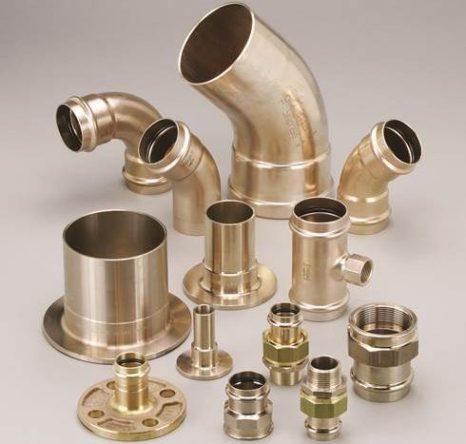
Marine Piping: It’s Not Rocket Science
The maritime industry, over time, has been unusually resistant to change in many aspects of how it operates. Arguably, the ‘biggest’ advances on the water spanning a five decade period leading up to the beginning of the new millennium could be measured in terms of deadweight tonnage and/or the length of a particular class of hulls. Nowhere is that reality more evident than in the shipyard, and looking at what equipment and hardware is used to build and repair marine vessels – now and in the past. Marine piping systems are a perfect example. click here to read the story 14:28
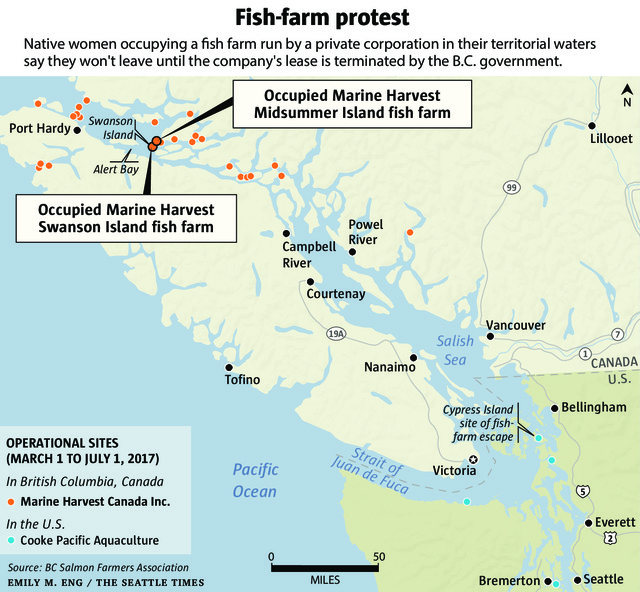
Salmon-farming operations face protests, occupations in B.C., legislative scrutiny in Washington state
A showdown is brewing over Atlantic salmon net-pen farming on both sides of the U.S.-Canada border. Marine Harvest, a major producer of farmed Atlantic salmon in British Columbia, is seeking a court order to evict First Nations women who have occupied one of its fish farms, an order it intends to enforce by police action if necessary, said Ian Roberts, spokesman for the company. Marine Harvest operates 11 open-water Atlantic salmon net-pen farms in the Broughton Archipelago alone, at the northeast end of Vancouver. Ten of the farms have leases that are up for renewal by the B.C. government in June, and two of those farms have been occupied by First Nations people who say they won’t leave until the leases are canceled. click here to read the story 12:04
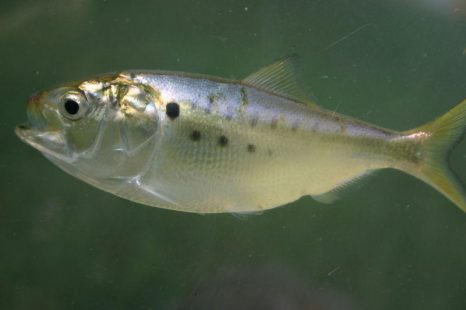
Environmentalists Are Wrong About Menhaden Fishery
Fishing companies are at odds with Rhode Island environmental advocacy groups over proposed changes for the menhaden fishing industry, Changes to the Interstate Fishery Management Plan for Atlantic Menhaden are up for a vote at the Atlantic States Marine Fisheries Commission meeting in Maryland this Monday and Tuesday. Meghan Lapp, fishery liaison for the Rhode Island-based Seafreeze Ltd, said that temporary plan shouldn’t be implemented because it’s based off of science that isn’t applicable to menhaden. click here to read the story 12:19
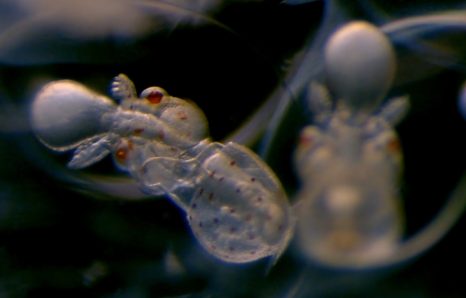
Squid: Coming to Life – How a cephalopod is born, in stunning microscopy footage
Produced by the evolutionary and developmental biologist Nipam Patel in his Patel Lab at the University of California, Berkeley, Squid: Coming to Life literally puts squid and cuttlefish development under the microscope. With a sparkling soundtrack and stunning microscopy footage, the short video shows the cephalopods transforming from embryos (when they develop in egg capsules) to hatchlings that emerge with the resplendent, colour-shifting skin they use for communication and camouflage. click here to watch the video 09:35
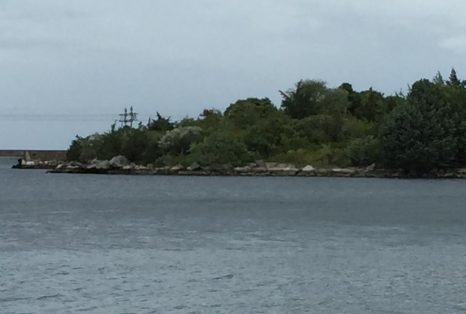
The NIMBY oyster people
I have covered, over the years, a lot of animated public hearings, more than I could ever count, in which neighbors turned out to protest things they wanted to stop: all kinds of egregious development, buildings too big, lights too bright, too much parking, too much traffic or general commercial sprawl. I don’t think, though, I have ever seen such a whiny, self-satisfied and selfish group as those, many of them waterfront property owners, who have been turning out to protest a proposed oyster bed in Stonington’s Quiambaug Cove. They are lawyering up, too. click here to read the story 09:17
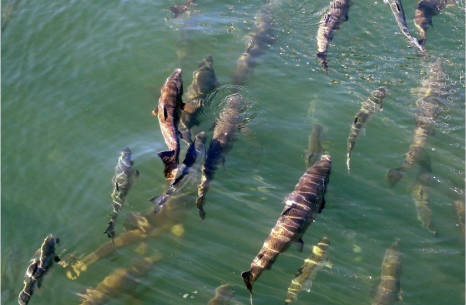
The “blob” is gone, but it’s left a troubling legacy on B.C.’s Pacific coast.
The blob is the popular name for a huge patch of warm water that featured record temperatures — in some cases, three to four degrees Celsius above normal — in the Northeast Pacific starting in 2013 and running through late 2015 and early 2016. Scientists are now concerned that young fish feeding at sea during the blob’s presence did not have enough nutritious food to eat — and that could translate into reduced adult fish to harvest going forward. click here to read the story 08:07
Atlantic Menhaden Management Board Meeting November 13, 2017 1:00 pm to consider approval of Amendment 3
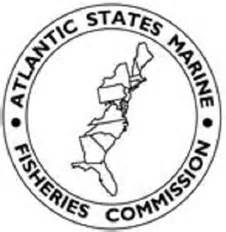 The Board will meet to consider approval of Amendment 3 to the Interstate Fishery Management Plan for Atlantic Menhaden. The Commission’s Business Session will meet immediately following the conclusion of the Atlantic Menhaden Board to consider final approval of Amendment 3. In total, there are 3 sets of meeting materials: main meeting materials, supplemental materials and supplemental materials # 2. The main meeting materials, which can be reviewed pdf click here include the Draft Agenda, Draft Board Proceedings from August 2017, and the Technical Committee Memo on Stock Projections for the Interim Reference Point Options in Draft Amendment 3 (please note this has been revised in Supplemental Materials #2). click here for info and webinar link 20:00
The Board will meet to consider approval of Amendment 3 to the Interstate Fishery Management Plan for Atlantic Menhaden. The Commission’s Business Session will meet immediately following the conclusion of the Atlantic Menhaden Board to consider final approval of Amendment 3. In total, there are 3 sets of meeting materials: main meeting materials, supplemental materials and supplemental materials # 2. The main meeting materials, which can be reviewed pdf click here include the Draft Agenda, Draft Board Proceedings from August 2017, and the Technical Committee Memo on Stock Projections for the Interim Reference Point Options in Draft Amendment 3 (please note this has been revised in Supplemental Materials #2). click here for info and webinar link 20:00
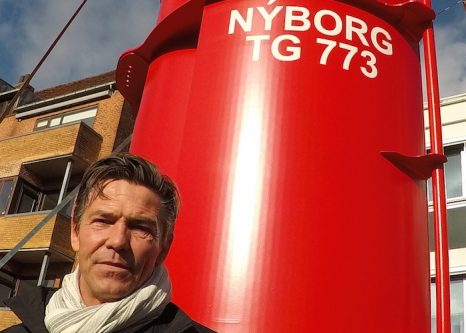
Door control from the wheelhouse
The idea of a pair of trawl doors that can be adjusted at the turn of a dial rather than by shifting attachment points and backstrops has been at the back of many people’s minds over the years – and there have been numerous experiments and trials carried out to get this to work. It has taken a while, and finally the first commercially-produced controllable pelagic trawl doors are available, produced by Esbjerg company MLD, an acronym that stands simply for Multi-Level Door. click here to read the story More images click here18:23

THE FORAGE FISH FARCE
December 14, 2012 — The Providence Journal’s “PolitiFact” unit investigated claims made by Pew Environment Group in advertisements they ran in several newspapers asking east coast governors to support their demand for a 50% cut in the menhaden harvest. Pew justified this demand saying “… in recent years, menhaden numbers along our coast have plummeted by 90 percent.” The newspaper found the claim to be “Mostly False”. The Providence Journal Lenfest is a Marketing/PR/Lobbying arm of Pew Charitable Trusts, Pew Environmental Group. They (Pew, Lenfest, Oceana, EDF, etc.) are presently working on eliminating the East Coast Menhaden fishery (aka Bunker, Pogies) after going after West Coast sardines recently. click here to read the story 11:38
Decision coming Monday on Menhaden management
 The Atlantic States Marine Fisheries Commission will decide on a new management plan for Atlantic menhaden at a meeting near Baltimore on Monday. Fishermen and environmentalists have a lot riding on how much of the resource is set aside for fishing, and how much is left for wildlife predators. Known as Amendment 3, the new rule will set the future course for managing the forage fish species eaten by many other fish, birds like osprey, dolphins and whales. click here to read the story Atlantic Menhaden Management Board – The Board will meet to consider approval of Amendment 3 to the Interstate Fishery Management Plan for Atlantic Menhaden. click here to read 3 sets of meeting materials 10:35
The Atlantic States Marine Fisheries Commission will decide on a new management plan for Atlantic menhaden at a meeting near Baltimore on Monday. Fishermen and environmentalists have a lot riding on how much of the resource is set aside for fishing, and how much is left for wildlife predators. Known as Amendment 3, the new rule will set the future course for managing the forage fish species eaten by many other fish, birds like osprey, dolphins and whales. click here to read the story Atlantic Menhaden Management Board – The Board will meet to consider approval of Amendment 3 to the Interstate Fishery Management Plan for Atlantic Menhaden. click here to read 3 sets of meeting materials 10:35
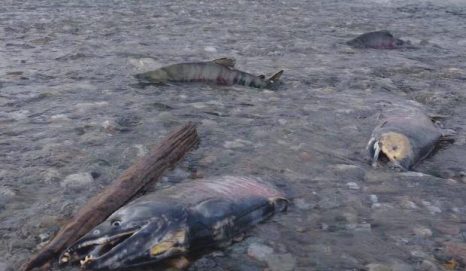
Salmon complete 1,000-mile journey, and life
On a morning with biting air in the single digits Fahrenheit, this river smells like sulfur and is splashy and loud. Bald eagles and ravens swoop in the updraft of a nearby rock bluff in what looks like play. In early November, a time when shadows lengthen and deep cold hardens the landscape, chum salmon have returned to spawn in the lower Delta River. In spots, the water is so shallow that dorsal fins wiggle in the frigid air. Some fish get frostbite on really cold days. Now is the peak of one of Alaska’s last great animal migrations of the year. click here to read the story 10:11
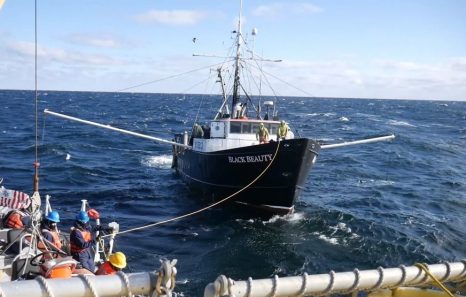
Coast Guard tows disabled fishing vessel with 30,000 lbs. catch off New Hampshire coast
The Coast Guard towed an adrift 65-foot fishing vessel to Gloucester Harbor after becoming disabled about 30 miles off the coast of New Hampshire, Friday. Unable to receive help from a sister ship and concerned about the impending weather, the captain of the vessel, Black Beauty, contacted watchstanders at Coast Guard Sector Northern New England, at about 4:45 p.m. He reported their transmission stopped working, there were five people aboard, and they had 30,000 lbs. of catch on board. click here to read the story 09:29
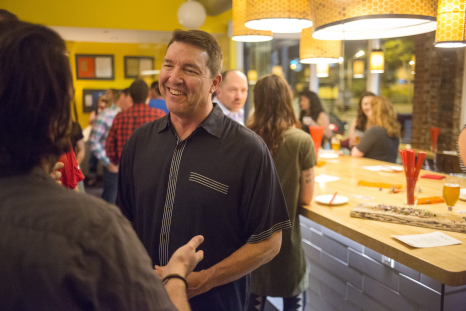
Maine’s lobster marketing group is facing existential opposition from an unlikely source: the lobster industry.
With lobster prices down, both at the dock and the dealer’s office, some who make their living off the state’s signature crustacean are reluctant to approve another five years of funding to the Maine Lobster Marketing Collaborative, whose $2.2 million-a-year budget is funded by lobster license surcharges. With its state funding about to expire, the collaborative is taking its case to fishermen in fire halls and ferry terminals from Kennebunk to Rockland this month, calling on powerful industry friends to lend their support and touting a new audit that gave the program stellar reviews. But it’s not an easy sell. click here to read the story 08:57
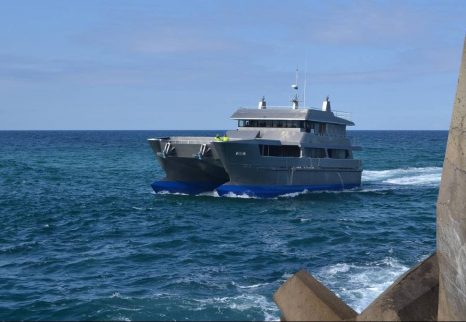
Big, new D&D fishing catamaran arrives home in Narooma
The town of Narooma came out in big numbers to greet the big new commercial fishing boat the D&D when it sailed through the bar crossing after its maiden voyage. The 25-metre, state-of-the-art, long-lining catamaran was built for the Abbott family of Narooma and will now be a unmissable fixture at the town wharf. The three siblings, Ryan, Todd and Hayley, still only in their 20s, commissioned the vessel to take their business the next step, to deliver the fresh seafood that they value add, selling it direct out of the factory, at markets and to restaurants. photo’s, click here to read the story 20:32
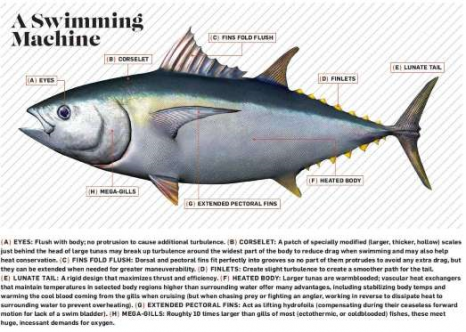
Über-Fish: The Amazing Tunas
Tunas are part of the family Scombridae, which also includes mackerels, large and small. But there are tunas, and then there are, well, “true tunas.” Two groups (sometimes known as “tribes” dominate the tuna clan. One is Thunnini, which is the group considered true tunas, characterized by two separate dorsal fins and a relatively thick body. The 15 species of Thunnini are albacore, bigeye, black skipjack, blackfin, bluefin (three species: Atlantic, Pacific, southern), bullet, frigate, kawakawa, little tunny, longtail, skipjack, slender and yellowfin. The other tribe is Sardini; these tunas — the dogtooth tuna and several species of smaller true bonitos — are somewhat more mackerel-like (notably with a more elongated body and a row of sharp, conical teeth). photo’s, click here to read the story 18:38
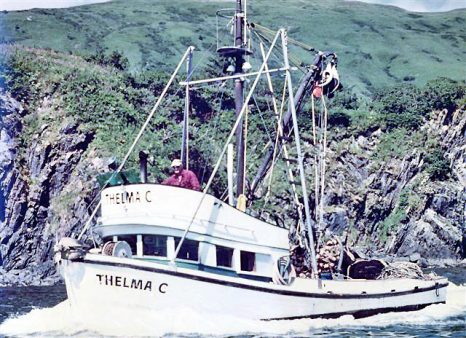
Historic Fishing Vessel Gets New Home in Downtown Kodiak
A historic fishing vessel has been given a permanent home in downtown Kodiak after 12 years of refurbishment and sitting in storage. click here to read the story, and from May 27, 2013, Kodiak’s Thelma C prepared for new home – After more than a year of restoration, the Kodiak Maritime Museum’s Thelma C is ready for its new home on the Kodiak waterfront. On Saturday, volunteers finished cleaning the Thelma C restoration site at Kodiak College, preparing the wooden fishing boat for storage until construction is finished on a permanent display stand downtown click here to read the story The Thelma C Restoration Project click here 15:33
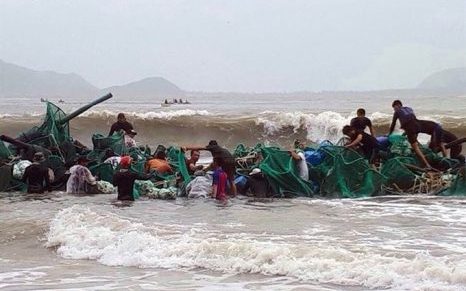
PHÚ YÊN – Typhoon Damrey wrecks lobster industry
A total of 89 people were killed, 1,140 fishing vessels either sunk or damaged and 24,000 aquaculture cages for lobsters, groupers and cobia were lost during Typhoon Damrey. More than 1,000ha of intensive shrimp growing fields and 570ha of molluscs were also damaged. Total losses suffered by the Khánh Hoà Province’s aquaculture sector is estimated at VNĐ 3.7 trillion (US$162.9 million) – the highest loss sustained by any sector. This accounted for 50 per cent of the province’s total storm losses. Typhoon Damrey also flooded thousands of hectares of land and destroyed the livelihoods of lobster farmers in the south-central region. click here to read the story 11:41
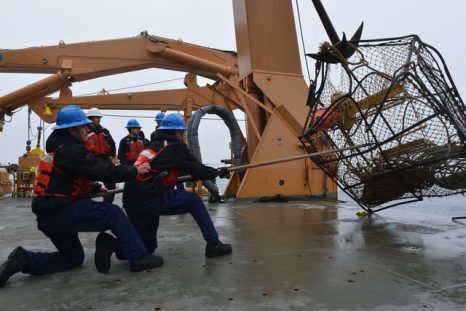
Seattle-based Alaska crab fleet alerted to new hazard: They’re carrying heavier pots
Alaska crab boats carry stability reports meant to guide the safe loading of up to several hundred crab pots that may be used to bring in a catch from the turbulent Bering Sea. But Coast Guard spot checks found that most of these documents significantly underestimate the weights of the steel-framed pots. The checks were spurred by a Coast Guard investigation into the Feb. 11 sinking of the Seattle-based Destination and the loss of all six of its crew. One of the vessel’s pots — retrieved from the Bering Sea bottom in July — was found to weigh more than the Destination’s stability report had assumed, according to testimony in a Marine Board of Investigation into the disaster. click here to read the story 10:46
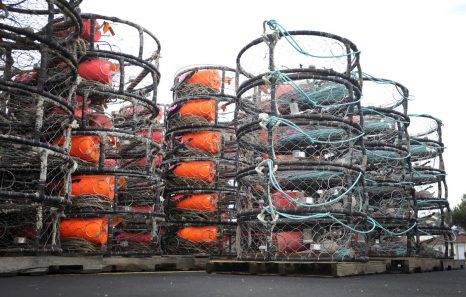
Oregon: Bay crabbing closures leave businesses empty
The Oct. 15 closure of both recreational and commercial crabbing came as quite a surprise to many local businesses who rely on bay crabbing in the months leading up to the Dec. 1 ocean crabbing season.,,, The Oregon Department of Fish and Wildlife along with the Oregon Department of Agriculture closed crabbing after noticing increased levels of domoic acid in local Dungeness crabs coming out of the bay. However, locals who financially rely on crabbing feel this isn’t as dangerous as state agencies are making it out to be. click here to read the story 09:08
The Codfather is Finally In Jail. But Who Is He?
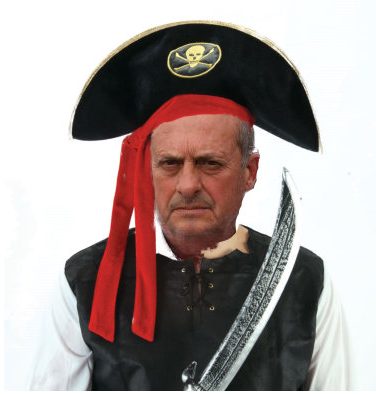 Until his downfall this year, Carlos Rafael, the 65-year-old fishing magnate from New Bedford, Massachusetts owned 36 boats and controlled about one-fifth of the New England cod market. With a business allegedly worth upwards of $100 million, which included a processing facility and various distribution channels, Rafael was one of the biggest players in the North American fish market. ,,, “I hustled a lot of fisherman,” he once admitted. “But shame on them they did not know better.” ,,, “I am a pirate,” he once told a group of federal fisheries regulators. “It’s your job to catch me.” click here to read the story 23:01
Until his downfall this year, Carlos Rafael, the 65-year-old fishing magnate from New Bedford, Massachusetts owned 36 boats and controlled about one-fifth of the New England cod market. With a business allegedly worth upwards of $100 million, which included a processing facility and various distribution channels, Rafael was one of the biggest players in the North American fish market. ,,, “I hustled a lot of fisherman,” he once admitted. “But shame on them they did not know better.” ,,, “I am a pirate,” he once told a group of federal fisheries regulators. “It’s your job to catch me.” click here to read the story 23:01






